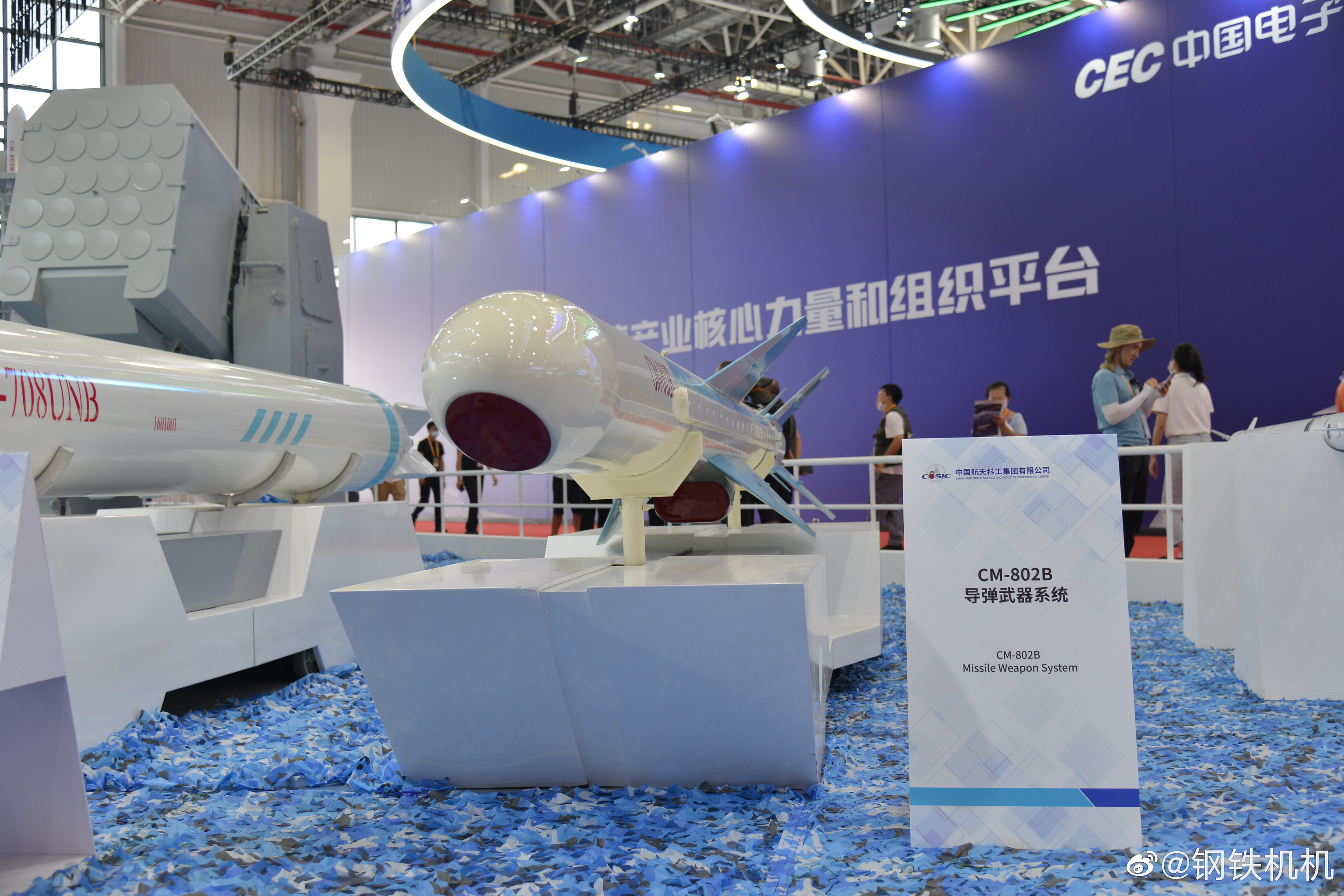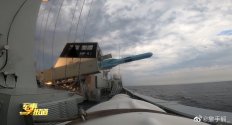Was listening through a podcast from Shilao on China's efforts countering US carriers. They mentioned that China's anti-carrier/anti-access strategy follows the Soviet Roadmap, except that they are much better at finding target, keeping track of target and able to attack with much more lethal weapons (as one would expect given the 30 year gap since the end of the Cold War).
They talked a lot about WZ-7/WZ-8 as part of the process in finding carrier groups and then keeping track of them. Compared it to the Soviet efforts in finding carriers. It makes a huge difference. In that case, they'd find the target, relay it to the command and wait hours for Tu-22M and/or Tu-95 to be loaded with AShM and then fly over. The carrier group would be long gone from the original location by the time Soviet bombers can actually get into position.
WZ-7 is considered to be really old tech, since it uses turbojet engine, have limited range (compared to RQ-4) and is not stealthy. WZ-8 is considered the much superior platform for acquiring target. They said PLAAF had really high requirements: low cost, high speed, LO signature and be able to be launched from H-6. Based on the requirements, the only option realistic option to quickly develop this is with rocket engines. WZ-8 can fly over quickly to confirm targeting (from satellite or something else) and also verify the outcome of attacks.
They also talked about hypersonic/ballistic missiles. ground based ones have no restrictions in terms of size, so they can built much larger and have huge warhead. However, they suffer from always coming from fixed locations, so they are easy to pick up. DF-21D was needed back in the early 2010s due to the need to have some platform available. Now, DF-26 is favored over DF-21D as ASBM of choice due to their newer design and superior capabilities.
They talked extensively about the importance of 055. The 055s can have large portion of its VLS as the 9m variant. There are limitation to its warhead size and range due to the restrictions from 850mm VLS and 9m deep cell. They brought up AGM-183A as a comparison, since it only has 150 lb warhead with its 5000 lb weight because it has to be carried by air, so it has size constraint (650mm diameter and 5.6m in length). One should expect that hypersonic AShM from 055 also would also have smaller warhead than the land based variant. As an example, DF-21 is 10.7 m long with 1.4m diameter and carries 600 kg warhead. VLS launched one would need newer fuel material, more efficient engine and smaller warhead to reach similar range. But it would allow attacks to be conducted from different angles and be launched in a hurry. They consider 055 as China's Ticoderonga and Kirov. It will need to be able to escort carriers and providing land attack, AAW/ABM defense and be a huge part of its anti-ship fire power. A smaller warhead missile is unlikely to sink any large ships (even at hypersonic velocity and steep dropping angle), but could achieve soft kills which make them vulnerable to further attacks from YJ-18 and YJ-12 (or even YJ-83). Expect the missiles to target not only carriers but also AB and other large/important ships.
They also mentioned a lot about how YJ-18 is the ideal anti-ship missile up until ASBM became available. They claimed that YJ-18 increased the attack area of Chinese AShM by 360 times (I couldn't believe this number when they said it), since it has longer range and 360 degrees targeting capability. I wouldn't be surprised if YJ-18 have well over 500 km range (maybe close to 1000 km). They said it probably has the most destructive power of any Chinese AShM when combining the terminal speed with the size of the warhead.
For those worried about land attack, they mentioned there is LACM version of YJ-18 called YJ-18A. As a whole, 055 sounded like the ultimate weapon that PLAN wanted in terms of all the things it can do. 052D would be limited in the number of deep VLS that it can hold.
Then, they talked about H-6K/J. Apparently when H-6K was first developed, they didn't have the ISR capability to allow H-6K to attack targets outside of air defense zones. Now they do. They mentioned that they did extensive work with Russians to miniaturize Moskits, so that they can launch these 4 YJ-12s from H-6J. YJ-12s also have significantly increased ranges (probably 500+ km) than Moskits.
They also talked about air defense saturation. Back in the days, Tu-95 could only guide 4 Anti-ship missiles. So the breadth of Russian attack was not as impressive as US Navy prepared for. I think the implication is that China with its various C4ISR assets (like KJ500) can coordinate and guide a greater number of missiles against moving naval targets.
They talked a lot about WZ-7/WZ-8 as part of the process in finding carrier groups and then keeping track of them. Compared it to the Soviet efforts in finding carriers. It makes a huge difference. In that case, they'd find the target, relay it to the command and wait hours for Tu-22M and/or Tu-95 to be loaded with AShM and then fly over. The carrier group would be long gone from the original location by the time Soviet bombers can actually get into position.
WZ-7 is considered to be really old tech, since it uses turbojet engine, have limited range (compared to RQ-4) and is not stealthy. WZ-8 is considered the much superior platform for acquiring target. They said PLAAF had really high requirements: low cost, high speed, LO signature and be able to be launched from H-6. Based on the requirements, the only option realistic option to quickly develop this is with rocket engines. WZ-8 can fly over quickly to confirm targeting (from satellite or something else) and also verify the outcome of attacks.
They also talked about hypersonic/ballistic missiles. ground based ones have no restrictions in terms of size, so they can built much larger and have huge warhead. However, they suffer from always coming from fixed locations, so they are easy to pick up. DF-21D was needed back in the early 2010s due to the need to have some platform available. Now, DF-26 is favored over DF-21D as ASBM of choice due to their newer design and superior capabilities.
They talked extensively about the importance of 055. The 055s can have large portion of its VLS as the 9m variant. There are limitation to its warhead size and range due to the restrictions from 850mm VLS and 9m deep cell. They brought up AGM-183A as a comparison, since it only has 150 lb warhead with its 5000 lb weight because it has to be carried by air, so it has size constraint (650mm diameter and 5.6m in length). One should expect that hypersonic AShM from 055 also would also have smaller warhead than the land based variant. As an example, DF-21 is 10.7 m long with 1.4m diameter and carries 600 kg warhead. VLS launched one would need newer fuel material, more efficient engine and smaller warhead to reach similar range. But it would allow attacks to be conducted from different angles and be launched in a hurry. They consider 055 as China's Ticoderonga and Kirov. It will need to be able to escort carriers and providing land attack, AAW/ABM defense and be a huge part of its anti-ship fire power. A smaller warhead missile is unlikely to sink any large ships (even at hypersonic velocity and steep dropping angle), but could achieve soft kills which make them vulnerable to further attacks from YJ-18 and YJ-12 (or even YJ-83). Expect the missiles to target not only carriers but also AB and other large/important ships.
They also mentioned a lot about how YJ-18 is the ideal anti-ship missile up until ASBM became available. They claimed that YJ-18 increased the attack area of Chinese AShM by 360 times (I couldn't believe this number when they said it), since it has longer range and 360 degrees targeting capability. I wouldn't be surprised if YJ-18 have well over 500 km range (maybe close to 1000 km). They said it probably has the most destructive power of any Chinese AShM when combining the terminal speed with the size of the warhead.
For those worried about land attack, they mentioned there is LACM version of YJ-18 called YJ-18A. As a whole, 055 sounded like the ultimate weapon that PLAN wanted in terms of all the things it can do. 052D would be limited in the number of deep VLS that it can hold.
Then, they talked about H-6K/J. Apparently when H-6K was first developed, they didn't have the ISR capability to allow H-6K to attack targets outside of air defense zones. Now they do. They mentioned that they did extensive work with Russians to miniaturize Moskits, so that they can launch these 4 YJ-12s from H-6J. YJ-12s also have significantly increased ranges (probably 500+ km) than Moskits.
They also talked about air defense saturation. Back in the days, Tu-95 could only guide 4 Anti-ship missiles. So the breadth of Russian attack was not as impressive as US Navy prepared for. I think the implication is that China with its various C4ISR assets (like KJ500) can coordinate and guide a greater number of missiles against moving naval targets.






